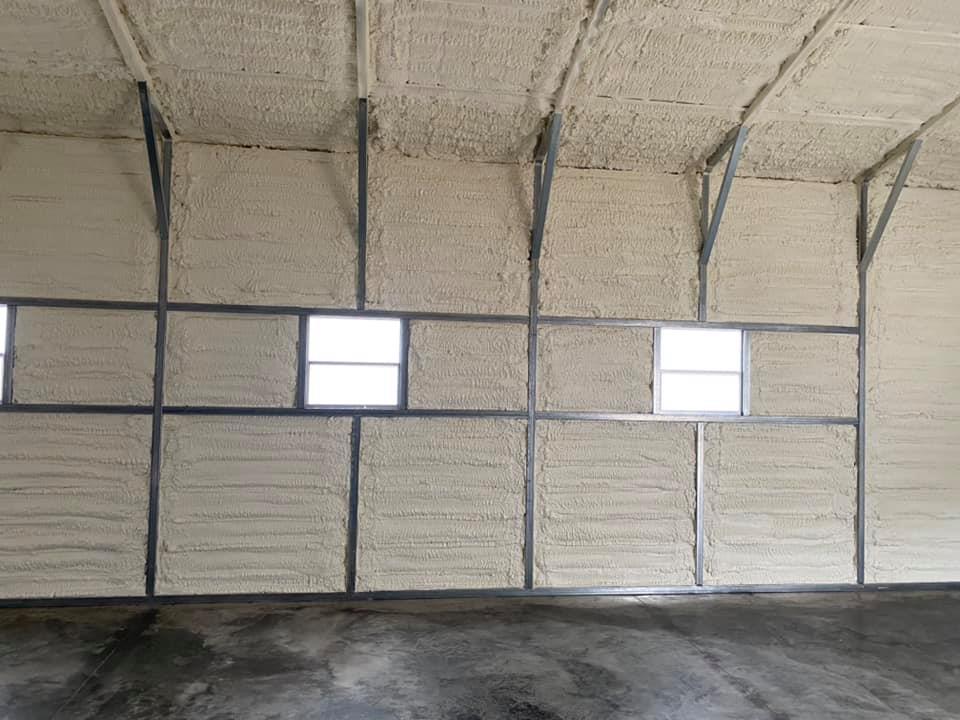
How to Maximize Spray Foam Efficiency in Metal Buildings
Spray foam is a game-changer in the field of home insulation. But did you know that spray foam insulation (SPF) works wonders beyond residential homes? It’s also the insulation your metal building needs!
When correctly installed, SPF increases the structural strength of your building while providing comfort and energy-savings.
In installing spray foam insulation in metal buildings, there are “golden rules” to reap its full benefits. Metal Construction Association and Spray Polyurethane Foam Association (SPFA) teamed up to research on the best practices of spray foam application for metal buildings.
Here are some of the conditions and ways spray foam should be applied to maximize its efficiency:
To create a sound building envelope, layer your metal panels with spray foam insulation
The spray foam’s insulating material polyurethane is a good thermal barrier that your single skin metal walls and roof could use. The proper amount of this insulation will protect you and your building from the weather outside.
Professional installers can help you determine the right amount of thickness which varies depending on the building code and climate zone.
As SPF fills the spaces between the panel assemblies, it seals the panel joists and provides thermal protection and vapor barrier for the building.
Your HVAC system won’t have to strain more than needed and the air inside the building is humid-free.
Consult the metal panel roof manufacturer
Before considering applying spray foam insulation below and in contact with standing seam metal roofs, ensure that these are not designed to expand/contract along temperature changes.
Spray foam is not recommended to be installed on such cases because it might restrict expansion/contraction of building components.
Choose closed-cell spray foam for insulating your metal building
Closed-cell is the ideal choice of spray foam for your metal building for two reasons: its waterproofing capability and high racking strength.
The cellular structure of closed-cell spray foam is tightly-packed. This closed-cell structure and the spray foam’s composition makes it an effective barrier against water and moisture. If you live in a flood-prone area, the more reason to choose SPF!
Once spray foam is applied, it conforms to the structure and hardens, applying ‘high racking strength’ and making the building more resistant to winds and other forces. Since closed-cell spray foam seals air and water out, your building is safe from condensation problems and even pests, too!
For exterior spray foam insulation, mix it with an elastomeric paint coat and for interior spray foam insulation, a thermal barrier
Exterior spray foam insulation must be applied with an elastomeric paint coat to prevent UV rays from damaging its surface.
If an interior spray foam insulation is exposed, a thermal barrier is added to increase its resistance against fire.
“Picture frame” application of spray foam
The recommended way of applying spray foam according to SPFA is that the applicator surrounds the interior perimeter and allows the foam to rise along with the stud. This way of application prevents potential structural damage if spray foam goes in between the girts and metal panels.
After framing the perimeter, the cavity is then filled with the foam manufacturer’s recommended foam thickness.
Communicate with electrical and HVAC Contractors
Inform the electrical contractors when spray foam is applied around electrical outlets to prevent junction boxes from being covered. This is avoided to prevent overheating of wires.
You want the perfect temperature regulation inside your building without inessential additional energy costs. Talk with the HVAC contractors with the use of SPF to determine the right sizing and amount of make-up air needed in the building.
Consult expert professionals
Spray foam insulation should be done by trained insulation contractors to give your building zero leaks and right placement of insulation that will last for a long time.
Before installing, insulation contractors will check the metal surfaces and prep them to be free from moisture, dirt, lubricant, and other contaminants. The metal should be clean so the spray foam can bond on the surface securely.
Experts in spray-foam insulation can install spray-foam without causing condensation problems to your building, reducing the risk of causing rust to the structures.
Spray foam insulation is an effective insulation when installed under the right conditions.
Do you want to insulate your metal building? Our experts at Koala Insulation are certified and trained to install spray foam insulation the right way.
With expert application, you can count on our insulation professionals to install spray foam insulation with perfect adherence to the metals and virtually no leaks for air or moisture, fulfilling our promised comfort, energy efficiency and structural strength to you. Book your free insulation evaluation with one of our consultants today!
Ready to book your free insulation evaluation?
We have 3 convienant ways for you to get in touch
We Provide Insulation Services to the Following Northwest Houston Areas
Houston, Spring Branch, Jersey Village, Willow Brook, Copperfield, Cypress, Mason Park, and Cinco Ranch
Counties Served
Harris County, Waller County, & Fort Bend County
Zip Code
77040, 77041, 77080, 77043, 77055, 77070, 77069, 77066, 77065, 77449, 77450, 77433, 77429, 77095, 77084, 77064
